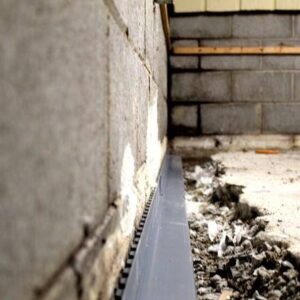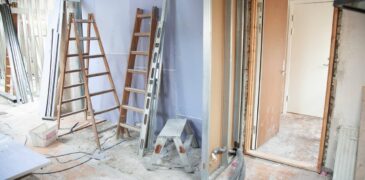Table of Contents
- Why Choose Hardwood Floor Restoration?
- Telltale Signs Your Floors Need Renewal
- Basic Methods of Floor Restoration
- Expert Tips for DIY Success
- Professional vs. DIY Restoration
- Common Pitfalls and How to Avoid Them
- Sustainable Choices in Floor Renewal
- Future Trends in Floor Restoration
Why Choose Hardwood Floor Restoration?
Hardwood floors are truly a signature feature in contemporary homes, often admired and revered for their stunning natural beauty and lasting durability that stands the test of time. Over the years, even the most meticulously well-maintained hardwood floors can begin to dull and develop unsightly surface blemishes from the routine daily activities and foot traffic of family life. While it might seem highly tempting to tear out aging boards completely and start fresh with new materials, restoration offers a remarkably appealing alternative that can provide incredible benefits. Choosing a modern, innovative process like dust-free hardwood refinishing Richmond helps homeowners rejuvenate worn surfaces effectively without the mess or negative environmental impact typically associated with full replacement. This advanced method not only safeguards both the cherished wood and your health by drastically reducing airborne dust, making the entire process much cleaner, safer, and more comfortable for everyone involved in the project.
Beyond the obvious visual improvements and enhancements, the restoration of hardwood flooring adds another significant layer of value. Research conducted by the reputable National Wood Flooring Association highlights that well-maintained hardwood can easily last for generations, often outliving carpet and other flooring options that cannot match its longevity and charm. Furthermore, restoration can also significantly boost property resale value, as buyers tend to overwhelmingly prefer authentic hardwood floors that exude warmth, character, and elegance. By choosing to refinish rather than replace, homeowners not only enhance their living spaces but also help conserve valuable resources and support sustainable living practices that are increasingly important in today’s world.
Telltale Signs Your Floors Need Renewal
Identifying when your cherished hardwood floors need maintenance can save you considerable time and effort over the long term. Classic signs that indicate the need for attention include a persistent dull finish that seems to lack vibrancy, a noticeable absence of luster even after thorough cleaning, or prominent surface scratches that easily catch the light. Moreover, unsightly discoloration may develop in areas exposed to sunlight or as old finishes break down over time, resulting in floors that appear patchy or aged beyond their actual years. Additionally, squeaky or shifting boards, particularly in high-traffic areas of your home, should be closely monitored, as these warning signs can indicate deeper structural wear that requires more comprehensive and urgent attention.
Homeowners might also observe that spills no longer bead up beautifully on the surface of the wood but instead soak quickly into it—a strong and unmistakable signal that the protective layer of finish is compromised and in need of restoration. According to experts in home maintenance, addressing these subtle yet telling cues promptly is crucial to maintaining the integrity of your floors. Delaying necessary restoration work can significantly accelerate the wear process, transforming small, insignificant issues, such as minor scratches, into major, costly problems, including warping, deep gouges, or even board separation. Therefore, staying vigilant and alert to these warning signs not only helps you intervene early but also ensures that you preserve both the aesthetic beauty and the structural integrity of your cherished hardwood floors.
Basic Methods of Floor Restoration
The path to renewed floors starts with choosing the right restoration technique for your specific needs.
- Buffing and recoating: This method is well-suited for floors with minimal wear that require their topmost protective layer to be refreshed. Buffing smooths out minor imperfections and prepares the surface for a new coat of polyurethane or other finish, restoring shine with minimal invasiveness.
- Sanding and refinishing: When floors have deeper scratches, grooves, stains, or faded patches, sanding may be necessary to restore their appearance. This more involved method removes the upper layers of the wood, erasing decades of wear, before stains and finishes are reapplied. It’s an ideal solution for restoring older floors or those with significant appearance issues.
- Spot repairs: For isolated problem areas, targeted repairs maintain the integrity of the rest of the floor. Patching in new boards or carefully filling gouges and stains can provide a seamless update while maintaining the overall integrity and character of the floor.
Choosing the best approach comes down to the extent of the damage and the construction of your floor. Careful inspection helps you decide between a full refinish or a lighter touch—either way, both options extend the life and look of your investment.
Expert Tips for DIY Success
For those up for the challenge, DIY hardwood floor restoration offers the satisfaction of hands-on work and potential savings. Before beginning, always remove furniture and clean the entire area, inspecting for nails or staples that may be sticking above the wood. Test stains and finishes on a small, hidden spot to ensure the result matches your expectations—wood can react differently than anticipated.
- Use a high-quality dust mask and goggles to keep dust and fumes at bay during each step.
- Sand in overlapping, even passes without skipping grit numbers in your sandpaper, which helps ensure a silky-smooth surface free of scratches.
- Apply stain and finish along the direction of the grain to blend seamlessly and prevent streaks.
- Allow for at least the recommended drying times between coats to prevent bubbling, sticky patches, and dust contamination.
For more detailed guidance, the comprehensive how-to resource from This Old House on refinishing hardwood floors is invaluable, offering technical advice along with practical shortcuts and lessons drawn from years of restoration experience.
Professional vs. DIY Restoration
While engaging in DIY projects can yield impressive results for straightforward jobs, certain tasks, especially intricate restoration jobs, are best entrusted to highly skilled professionals. These seasoned experts have access to advanced, heavy-duty equipment that is not typically available to everyday homeowners, such as powerful industrial-grade sanders that can efficiently and evenly remove old, worn-out finishes from wooden surfaces. Additionally, they possess a wealth of in-depth knowledge regarding various wood species and finishes, which is particularly beneficial for preserving the unique and beautiful characteristics found in historical or specialty hardwood floors.
While DIY enthusiasts often excel in small, manageable spaces or minor touch-up work, dealing with large layouts or floors that have intricate, complex design elements can pose significant and daunting challenges. Professionals are trained to effectively handle unexpected issues that may arise, such as subfloor distortions or boards that require precision patching and repair. Furthermore, they can significantly limit disruptions to your home; often, they can complete large sections of work in a shorter amount of time and with considerably less mess than novice attempts would typically create. Ultimately, choosing between DIY and professional assistance depends largely on your comfort level, the amount of time you have available, and your willingness to tackle potential complications. Sometimes, securing peace of mind is well worth the investment you might make in hiring a professional for the job.
Common Pitfalls and How to Avoid Them
Even the most enthusiastic DIY projects can run into trouble without proper planning or patience. One of the most common mistakes is inadequate sanding, either skipping necessary grits or failing to maintain consistent pressure across the floor. This error often leaves behind visible marks or uneven surfaces that become glaringly obvious after a new finish is applied. Using the wrong cleaning products before restoration can also interfere with finish adhesion, leading to peeling or discoloration within months.
- Prep thoroughly—move all furniture, sweep, mop, and remove every trace of debris before beginning.
- Maintain ventilation throughout the process to prevent the buildup of dust and fumes, reducing both fire hazards and health risks.
- Double-check instructions for stains and finishes, as some products are not compatible and may cause clouding or sticky surfaces when mixed.
Engaging a friend to inspect your work provides a valuable second perspective that may catch issues you overlooked. A deliberate, careful approach helps avoid rework and ensures your hard-earned results look great for years.
Sustainable Choices in Floor Renewal
Eco-friendly floor restoration has become more accessible and appealing than ever before. Thanks to advancements in technology and increased awareness of environmental issues, homeowners today have the opportunity to select from a variety of water-based, low-VOC finishes. These innovative products not only protect the health of their families but also play a crucial role in safeguarding the environment by significantly reducing harmful chemical emissions that can adversely affect air quality. Moreover, modern dustless sanding methods not only keep your home cleaner and more organized but also effectively prevent particulate matter from contaminating the air, both inside your living space and outside in the surrounding environment.
Additionally, choosing to use locally sourced or recycled woods for any necessary patch repairs further decreases your environmental impact, supporting sustainable practices and local economies. Moreover, the practice of restoring existing floors rather than opting for complete replacements maximizes the utility of valuable materials already in use, thereby minimizing waste. As environmental standards continue to grow stricter and more individuals express a demand for healthier indoor living spaces, these conscientious choices contribute significantly to both personal well-being and global sustainability. Therefore, making these decisions means that every step you take on your beautifully renewed floor not only feels good but also represents a step towards a greener future, helping to preserve our planet for future generations.
Future Trends in Floor Restoration
Hardwood floor restoration is continually evolving with the times, adapting to meet the changing needs and desires of modern homeowners. Innovations in water-based and hybrid finishes not only provide impressive beauty and aesthetic appeal but also offer remarkable longevity while significantly reducing drying times and minimizing unpleasant odors within the home environment. These advancements reflect a growing trend towards efficiency and comfort in flooring solutions.
There are now specialized finishes designed explicitly for easy spot touch-ups, allowing homeowners to effortlessly address small scuffs and blemishes without the need to redo entire rooms, thus saving both time and resources. This convenience empowers homeowners to maintain the pristine look of their floors without the hassle associated with traditional restoration methods.
Technological advancements in the flooring industry, including the emergence of smart flooring systems, promise to revolutionize the way we think about and interact with our floors. These innovative systems may feature essential elements such as moisture monitoring capabilities, enhanced scratch resistance, and even embedded sensors that track wear over extended periods, providing valuable insights into the floor’s overall condition. As homeowners increasingly seek sustainable and convenient home solutions that enhance their living spaces, these remarkable developments set the stage for flooring options that are not just visually beautiful and incredibly durable, but also interactive and protective for the long term.
By staying well-informed and open to exploring these new options, you can ensure that your floors remain at the forefront of comfort, style, and sustainability, ultimately enriching your home life for years to come.




